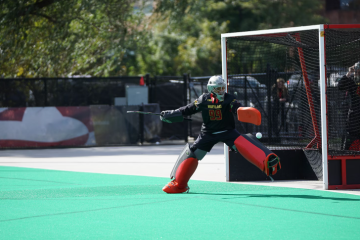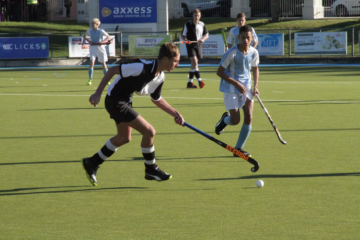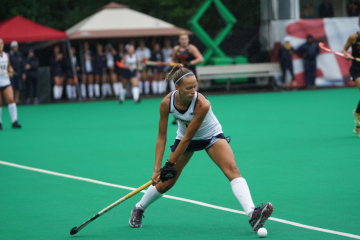Field hockey is a popular team sport played widely across the globe. With its origins dating back thousands of years, field hockey has evolved into a fast-paced game with complex rules and regulations. This article will provide an overview of the basic field hockey rules, equipment used, gameplay format, and penalties.
The Equipment
Field hockey is played with specialized equipment tailored for the high speed and intensity of the game. The ball used is a hard solid plastic sphere measuring between 7-9 inches in circumference, often white or orange in color for visibility. Players also use a long, thin stick with a curved end known as a hockey stick or field hockey stick. These sticks vary in length based on player height and position, generally ranging from 31-38 inches. Hockey sticks are made of materials like wood, fiberglass, or carbon fiber. Composite sticks combining materials are also common. Players wear mandatory protective equipment including shin guards, mouth guards, and face masks. Goalkeepers wear additional padding on hands, chest, legs and feet. The goal posts measure a standard 3.66 meters wide by 2.14 meters high and have a net to capture goals scored.
Field hockey is played on a rectangular grass or artificial turf field measuring about 91-110 meters long and 55-65 meters wide. The field is marked with boundary lines, a center line, goal posts, and circles of various diameters to designate specific areas of play. For example, a striking circle with a radius of 14.63 meters surrounds each goal post. This semi-circular area defines where scoring can occur.
Teams and Positions
Each field hockey team has a maximum 16 players in its full squad, with 11 players on the field at any time. This includes 1 designated goalkeeper and 10 outfield players arranged in various positions like forwards, midfielders, and defenders. Unlimited substitutions are permitted at any point during play.
The Forward is responsible for scoring goals and attacking. Midfielders transition play between offense and defense. Defenders and the Goalkeeper work to prevent the opposing team from advancing and to defend the goal. Players must abide by strict positioning rules when restarting play after violations and penalties.
| Position | Role |
|---|---|
| Forward | Scoring goals and attacking |
| Midfielder | Transitioning between offense and defense |
| Defender | Defending the goal |
| Goalkeeper | Defending the goal in the striking circle |
Game Format and Rules
A standard field hockey match consists of two 35 minute halves with a brief 5-10 minute halftime break. The team with more goals scored at the end of regulation time wins the game. Draws are allowed in regular league play but penalty shootouts determine the winner if a draw occurs during playoffs or championships requiring an outright winner.
International field hockey matches such as the Olympics are played in 4 quarters of 15 minutes each rather than two halves. Timekeeping rules are also different for injuries, suspensions, and other delays.
Some key field hockey playing rules include:
- No body contact. Players may only tackle the ball, not other players.
- No kicking the ball or handling it with hands or body. Players propel the ball only with their stick.
- When dribbling, the ball must be within playing distance of the player’s feet.
- Offside rules prevent players from lingering near the opponent’s goal without the ball.
- Dangerous high swings of the hockey stick at body height or above are prohibited.
- Only attacking players are allowed inside the striking circle to score goals.
Penalties
Umpires closely monitor any rule violations or misconduct during play, penalizing it in various ways:
- Free Hits: Awarded against minor infringements like offside or improper tackle. Opponents must be 5 yards from the ball on free hits.
- Penalty Corners: Awarded against an intentional offense within the striking circle. Five defenders are positioned behind the goal line while attackers try to score.
- Green & Yellow Cards: Issued as warnings or temporary suspensions for misconduct, rough play, or repeated penalties.
- Stroke: Penalty shot directly against the goalkeeper from 6.4 meters away.
In summary, field hockey demands impressive physical fitness, dexterity, teamwork and mastery of numerous regulations from players. The many rules allow the sport to proceed smoothly despite the very high speeds of play. By understanding the basics of field hockey equipment, format, gameplay and penalties, any spectator can better appreciate and enjoy the skill and competition on display in a fast-paced field hockey match.



0 Comments